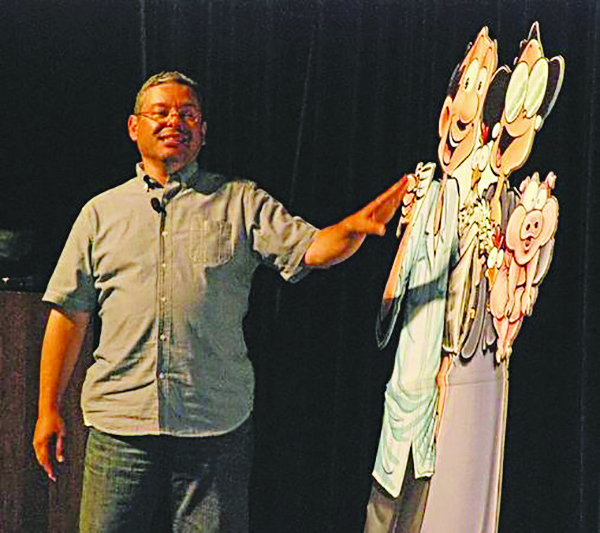
Comic writer Hector Cantú launched the comic strip “Baldo” along with illustrator Carlos Castellanos. Photo courtesy of School of Arts and Humanities.
Creative writer Hector Cantu, the co-creator of the widely syndicated Baldo comic strip, visited UTD on March 25 to give a lecture sponsored by the School of Arts and Humanities. The Mercury sat down with Cantu to learn more about the inspiration behind the comics.
Q: What inspired the
Baldo comics and the characters? What made you decide you wanted to create this
specific family with its themes?
A: I didn’t see people like this in the
newspaper. I would see other comics based on cats or based on dogs or other
people, but I did not see this kind of family. I said, “You know, it’s time for
this kind of family to try to be in the comics page.” And that’s why we pitched
it. I think that’s why people decided to put it in the paper.
Q: Is there a specific message or theme
you want your readers to follow or be inspired by?
A: I think it all boils down to tolerance and seeing things from a
different perspective. With how this family sees things, I think all stories
tell us about things we are not familiar with. That’s why you read a book,
that’s why you read the news — you want to experience things that other people
have experienced. Baldo is written in that spirit: presenting stories to show
you how other people experience things.
Q: Are any part of
the comics based on yours or Castellanos’ life?
A: I would say
some instances here and there might have happened to us as teenage boys. But
after 20 years, and after 300 or more comics a year, you have to make up a lot
of stuff. Most of it is made up.
Q:
What do you usually base these off of? You mentioned how you read up on the
news, and since the majority of your characters are teenagers, do they follow
the trends that teenagers today are following?
A: Right, I try to do that. I try to make them very tech-savvy and social
media-savvy and deal with other kids in school. I’m always reading about that.
You know, it’s a matter of making sure that it is more or less accurate, and
that it’s staying close to reality.
Q: What sort of
future do you see for your comics? What legacy has there been and will continue
to be?
A: I hope people see Baldo and his family as an American family that are
just like everyone else. They may see things a little bit differently, but at
their hearts, they are just like everybody else. As for me as a writer, the
idea that my work has touched people is what means the most. A year ago, at a
Comic-Con, this 18 year-old young woman came up to me and said how she had a
comic strip taped up on her wall for 10 years and she was a big fan of (Baldo’s
little sister in the comics). The comic strip helped her get through a lot of
stuff. To me, that touches me and makes me realize that we are in a lot of
newspapers and we have a lot of readers and that we are touching hopefully a
lot of people in the right way. We are happy if they’re inspired by the
characters and the stories. That always makes me feel warm inside.
Q:
What character would you say you resonate the most with?
A: It’s just natural to say Baldo, though I think a part of me
resonates with all the characters. Whether it’s Gracie who likes books, or Dad
who’s trying to keep traditions alive, I think they’re all a piece of me in
different ways.
Q: In your opinion, what has been the
biggest accomplishment so far with your comics?
A: It kind of goes back to that story of
touching people. (It) is a big accomplishment for me personally that people
read it and are actually touched by it. We are a part of people’s lives because
we’ve been around for almost 20 years, and people are growing up with this
comic. They’re hopefully learning a little bit from it and having laughs over
it. And that to me has been important to see that happening.